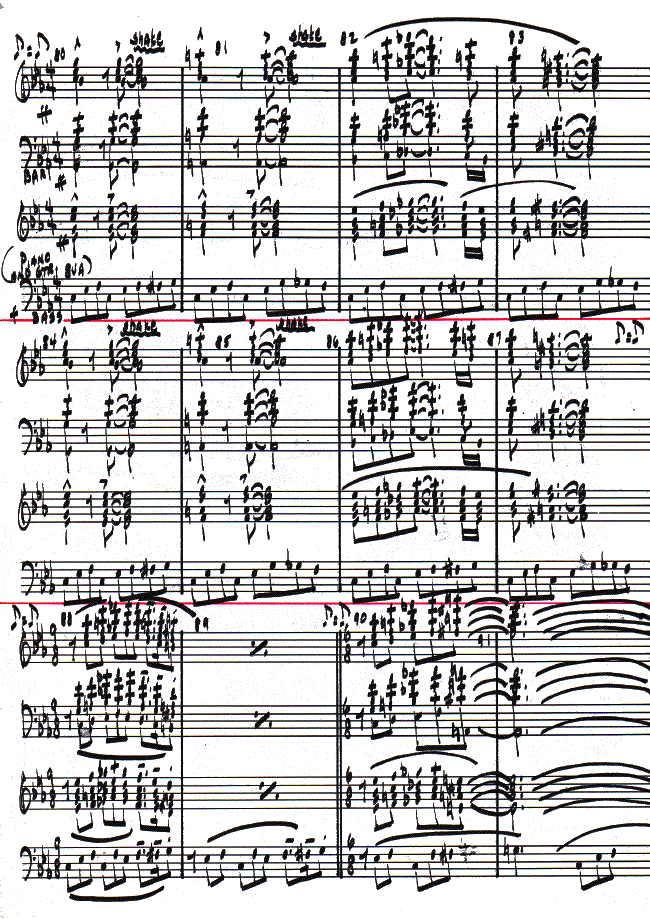 Transcribing
Transcribing
I'll add to this list from time to time, as I think of other items.
You may be one of the rare individuals who can hear a tune once or twice, and instantly recognize everything that's going on. For the rest of us, transcribing (copying) someone else's work is a great way to learn what your favorite writers and players have done. Most writers have done a lot of that, along with an after-the-fact analysis of the music. Be cautious though, if you're studying someone else's transcription. Sometimes listeners misunderstand a part, or don't know how many people were in the band, or intentionally alter the music to fit their needs. As with most things in life, the only way to be really sure is to do it yourself.
Not all of the work you'll like is published, so transcribing it is the only way to see the parts. Look around, though, via Google, etc.. Many arrangements (especially orchestral works) are published accurately, and you can learn a tremendous amount from studying scores, while listening to the music. When I was a kid, the local symphony conductor used to loan me scores, which was great.
Another accurate way to obtain a transcription is to obtain the individual parts, (say, for a big band) and reverse engineer them to create a score. Tedious, but it works.
A moment of enlightenment:
Every musician has moments where they suddenly understand something they didn't understand before.
This was a major one for me.
I auditioned (as a civilian) for the job of musical arranger for the Air Force Band, when I was 19. At that time, I had a good, but incomplete musical education. I passed the audition because I was able to complete the assignments given to me on time, and because I had a "book" of over 130 big band charts already under my belt. But, as soon as I got to Wright-Patterson (Dayton, Ohio) I began receiving some assignments that had tight deadlines, and there was a particular thing that would sometimes hold me up. In the process of transcribing, I would sometimes get "stuck", unable to figure out what a certain chord was. Well, one of the study materials I had was Mehegan's 4-volume set, "Piano Improvisations", which focused on thinking of music in terms of the number system, rather than in specific keys. I recommend these books to any aspiring writer, as they provide a great set of tools.
Boiling music down...
A typical comment from jazz players, when listening to pop music is, "Where are all of the 2-5's?" (meaning that there can be more harmonic interest in a tune when more 2-5 progressions are used to connect the changes) So... Why does a IIm7 - V7 - I progression sound so good? It's really simple. When you've played this ("final cadence") you have just played all the notes in the major scale of that key. (the I chord)
If you disregard key signatures in your thinking, and start to think more of the root progression, you'll realize something rather shockingly-simple. Look at a typical 2-5 progression. (Say, Dm7 to G) We only call it a "2-5" because of the key signature. Without a key, it's simply a "5-1" progression. Most good-sounding chord progressions are really 5-1 sequences, and it's certainly the most easily-recognizeable progression. Think about the very common 1-6-2-5 progression as another example. The "6-2-5-1" portion of that is really three 5-1 progressions, if you disregard the key.
The concept we're headed toward is called "Tonicization", and works like this:
When you get to a spot where you can't recognize a chord, shift your attention to the next one that you CAN recognize. We'll call that our "arrival chord". Now, thinking on how most chord progressions work, realize that in the vast majority of cases, the preceding chord will either be a fifth away, or a half-step away. (the "upper chromatic substitute) Finally realizing this simple truth cut my aspirin consumption in half.
Of course, this technique has other uses...
You can use it to "fix" progressions, by inserting more "2-5" or "5-1" progressions between the odd chords, to make them resolve. (below) It will also help you solve problems and create more musical transitions in any musical work you do. Songs with good-sounding root progressions are the ones that stand up over time.
Here are some examples:
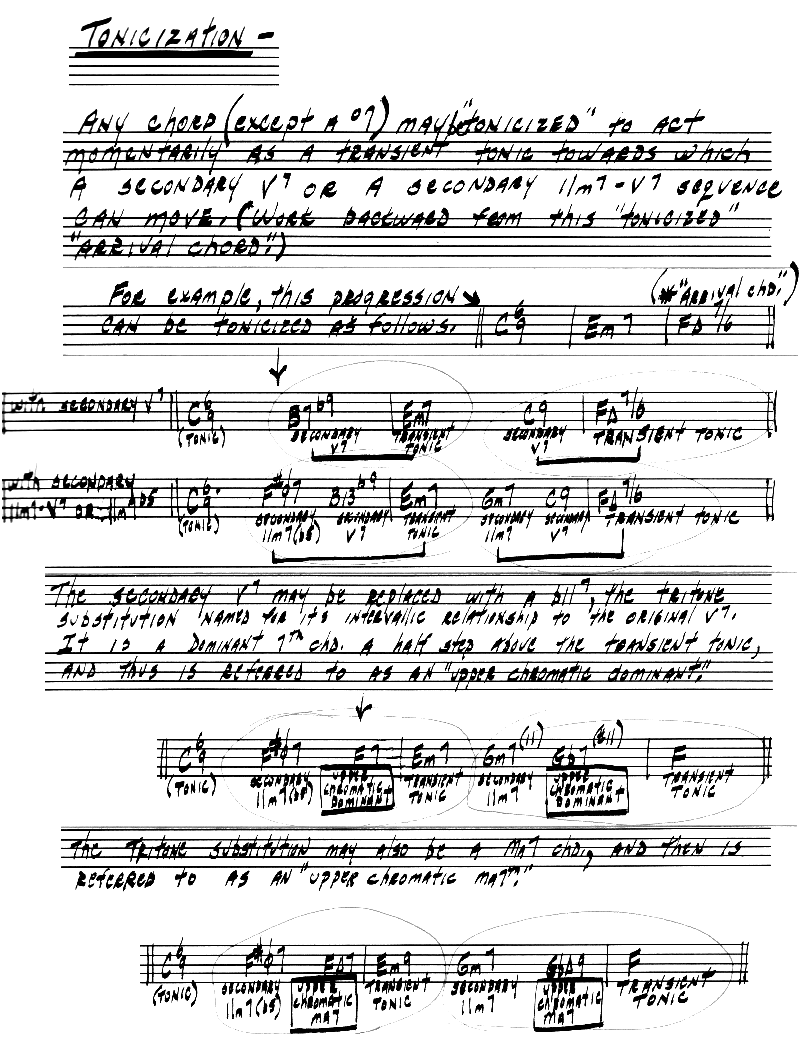
A few transcription examples - Some with analysis:
Transcribing other people's work is one way to learn the most popular methods of doing things. Although each of the examples below are different, you'll notice a LOT of similarities, in terms of rhythm, chord progressions, and the ranges where each instrument plays. These were done many years ago, so the tunes aren't "current', but the methods used are the same ones in use today, in pop music. Melodies and rhythms change, (hopefully) but good musical concepts remain the same.
Examples by Earth, Wind, and Fire and George Benson
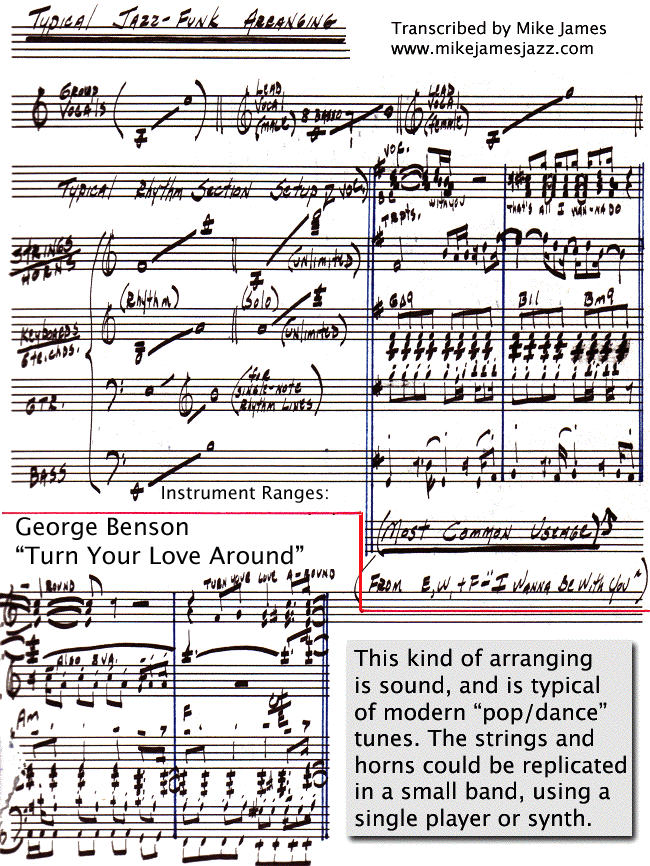
An example by Al Jarreau
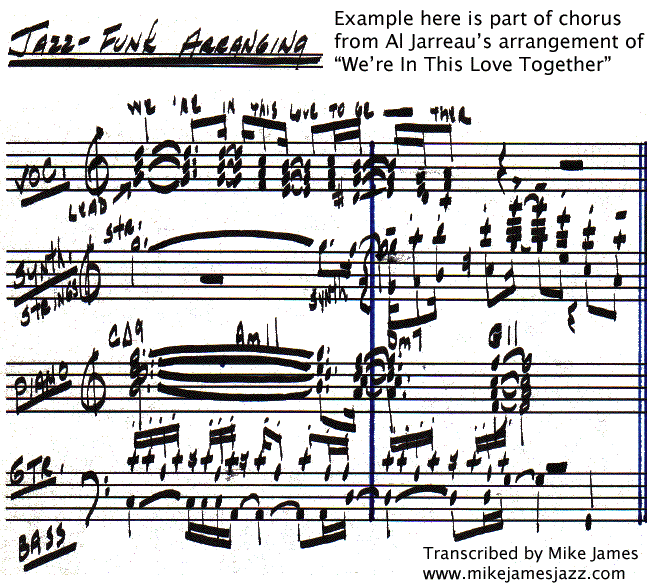
An example by "Lulu"
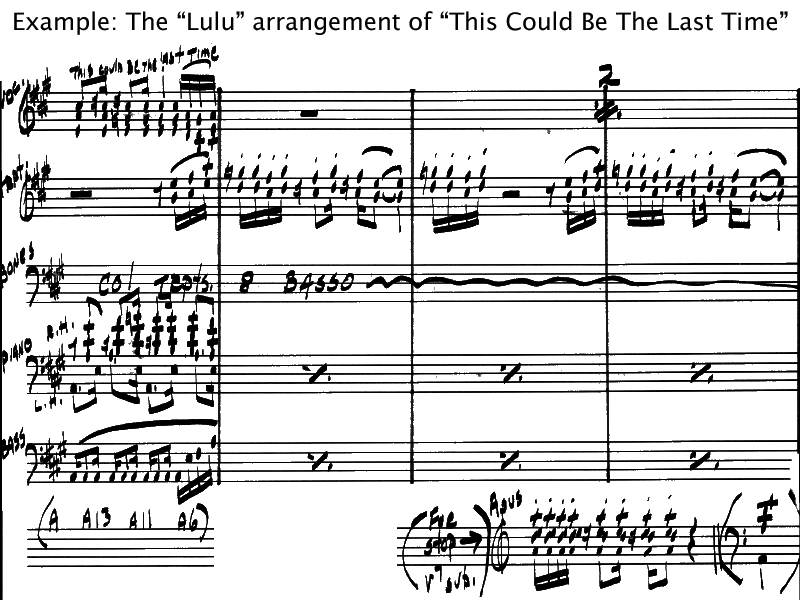
An example by Gino Vannelli
Gino Vannelli's work is fascinating to analyze, because it's quite elaborate and well-planned... somewhat like a big band or orchestra arranging style, and
The analyzed section below is the "turnaround" from the end of the chorus on Gino's tune, "Appaloosa".
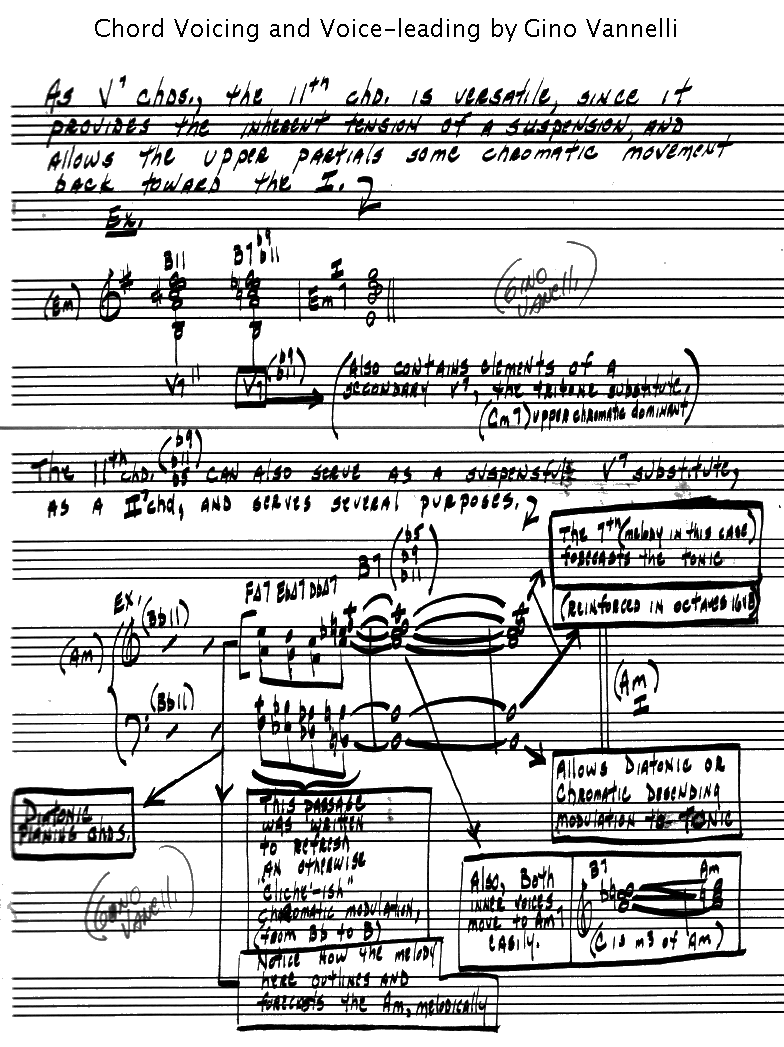
Big band transcribing: (More in the Arranging and Composing article)
An excerpt from "Channel One Suite", by Bill Reddie, written for Buddy Rich:
This was a challenge. (!) (This is just page one of almost 30.)
